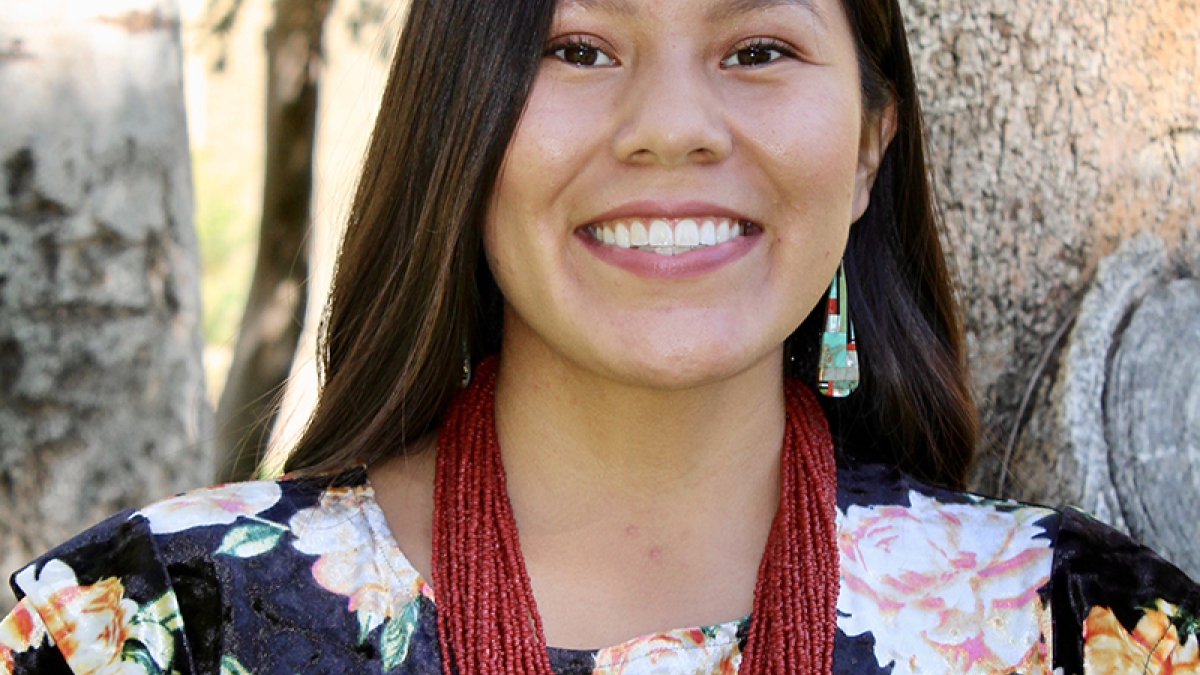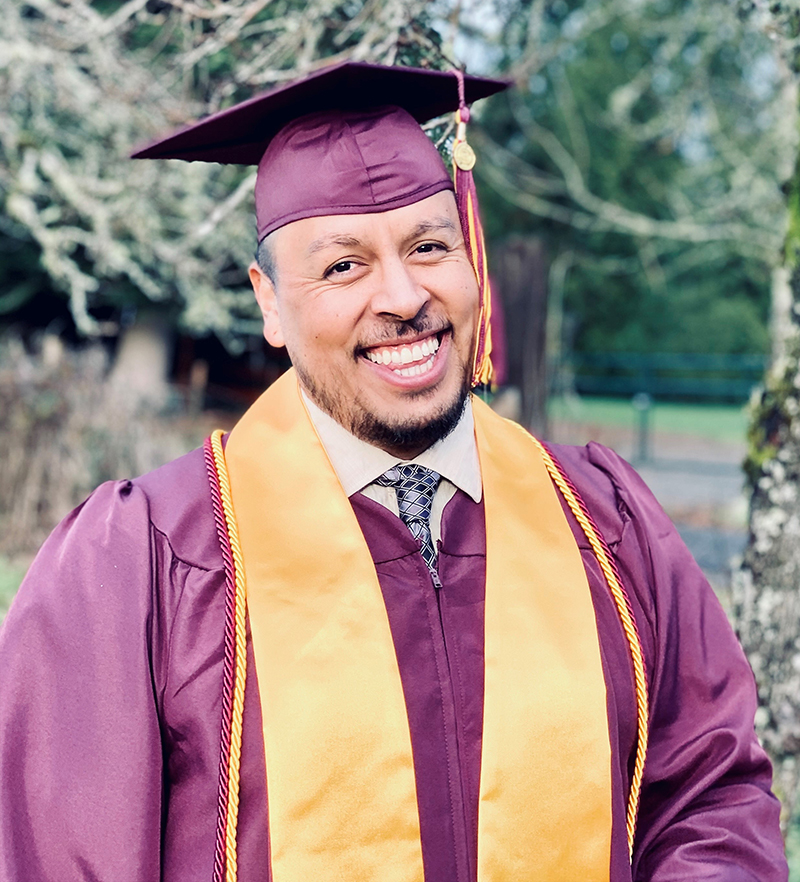Exercise and wellness graduates impact the health of people with disabilities

Daangoiina Haven
The course is officially named CHS 494 – Adaptive Exercise Program Practical Experience, but most students at Arizona State University's College of Health Solutions know it simply as AEP.
It’s both a class and a community resource based in the Lincoln Family YMCA on the Downtown Phoenix campus where people with disabilities and ASU students meet for fitness training. The program is designed to improve the overall health and well-being of the participants while at the same time giving ASU students hands-on experience working with a specialized population.
Alvaro Pacheco and Daangoiina Haven are two College of Health Solutions alumni who took the course as undergraduates. Now that they’ve graduated — both in December 2020 with a degree in exercise and wellness — they have some perspective about what the program meant to them and the people they worked with.
‘Prehab instead of rehab’
At the outset, the two had different reasons for signing up for the course.
Pacheco said he was moving out of his comfort zone when he signed up to train clients with Down syndrome for the AEP class.
“I wanted to see if I would be able to connect and relate to clients with Down syndrome,” he said.
In addition, he was interested in testing the concept of “prehab versus rehab,” where trainers work with clients to prevent injury and limit pain through strength training and conditioning to avoid the need for rehabilitation later.
Haven wanted to gain experience in personal training and research. Having grown up on Navajo tribal lands, she was also excited about the opportunity to learn in a large exercise facility.
“We don’t have anything like this back home. We don’t even have a gym back home,” she said.
But she was interested in working with disabled populations even before her AEP experience because she has a niece with autism, and, just as the Navajo Nation is short on gyms, it also lacks exercise programs that serve people with disabilities.
Finding a welcoming gym
AEP is the brainchild of Clinical Assistant Professor Simon Holzapfel. He began the community-based program as a class in 2017 to teach his students about health-related fitness testing, exercise prescriptions for people with disabilities and safety precautions while also providing a free resource for a group that can benefit both physically and mentally from exercise.
Those with Down syndrome and other physical and mental limitations often have low physical activity opportunities and a very high risk of chronic diseases, Holzapfel said. They have a harder time finding a welcoming gym, getting to that gym and meeting peers in their own age range, so his program offers both fitness and social opportunities.
“The No. 1 reason our participants come to the program is that they get to hang out with their exercise buddy," he said. "It makes them feel part of the ASU community.”
Alvaro Pacheco
Making meaningful memories
Having to stretch their own training skills to help their clients and then watching them embrace fitness activities was the best part of the class, Haven and Pacheco said. One client in particular stands out for Pacheco because she was a reluctant participant, and she was nonverbal.
“I was struggling to find a cardio activity she enjoyed and decided to just take a break and play some basketball with her to get away from the challenges of the exercise program,” he recalled. “She lit up with joy and excitement. After that, I was able to incorporate strength work into our days out on the court.”
Haven had a similar memory with an exercise buddy who learned how to box.
“One of the trainers who was helping me was a certified boxing trainer and would provide drills for us to do. We had so much fun,” she said. “The improvements and happiness of my clients were the best memories.”
A lasting effect on the future of health
Now that they have graduated, both Haven and Pacheco can look back and see how the course changed them in ways they hadn’t anticipated.
“In this class, students are the teachers, and we’re applying what we learned in our classes. It was a joy developing those skills and then seeing my clients accomplish goals they thought they could never do,” she said.
Pacheco said his perspective was completely altered about what having a disability means.
“I had a bit of a distorted view as to who these individuals were, but AEP showed me that these individuals are smart, intelligent, strong and capable,” he said.
They have both moved on to the next step in the career journeys — Haven to California to pursue a master’s degree in public health, and Pacheco to Washington where he hopes to enter a graduate program in athletic training. They are grateful for what they learned in AEP and hope to use their experience in their future health careers.
“The Adaptive Exercise Program taught me so much, and something like it should be offered in every community to provide a safe place for everyone to exercise and socialize,” Haven said.
Pacheco said he wants to duplicate that sense of welcoming and community he remembers from the class.
“After going through the AEP experience, I want to implement something along those lines because there’s an exclusion of this community at commercial gyms," he said. "It’s sad, because everyone wants to feel welcome. I’d like to create a place in the gyms where I am located, especially for people with disabilities and volunteers or students to meet and train together.”
More Health and medicine
ASU team part of nationwide study looking at Type 2 diabetes in youth
Near the end of an interview in which he talked about the work his team will be doing to tackle the rise in Type 2 diabetes among…
Leading the way in wellness: ASU highlighted in The Princeton Review's 2025 Mental Health Services Honor Roll
Being a college student isn’t easy — navigating new routines, people and places can be a challenge, especially if the right…
New Indigenous health dashboard offers robust database for scholars
By Nicole Greason and Kimberly Linn A team at Arizona State University’s College of Health Solutions and …
